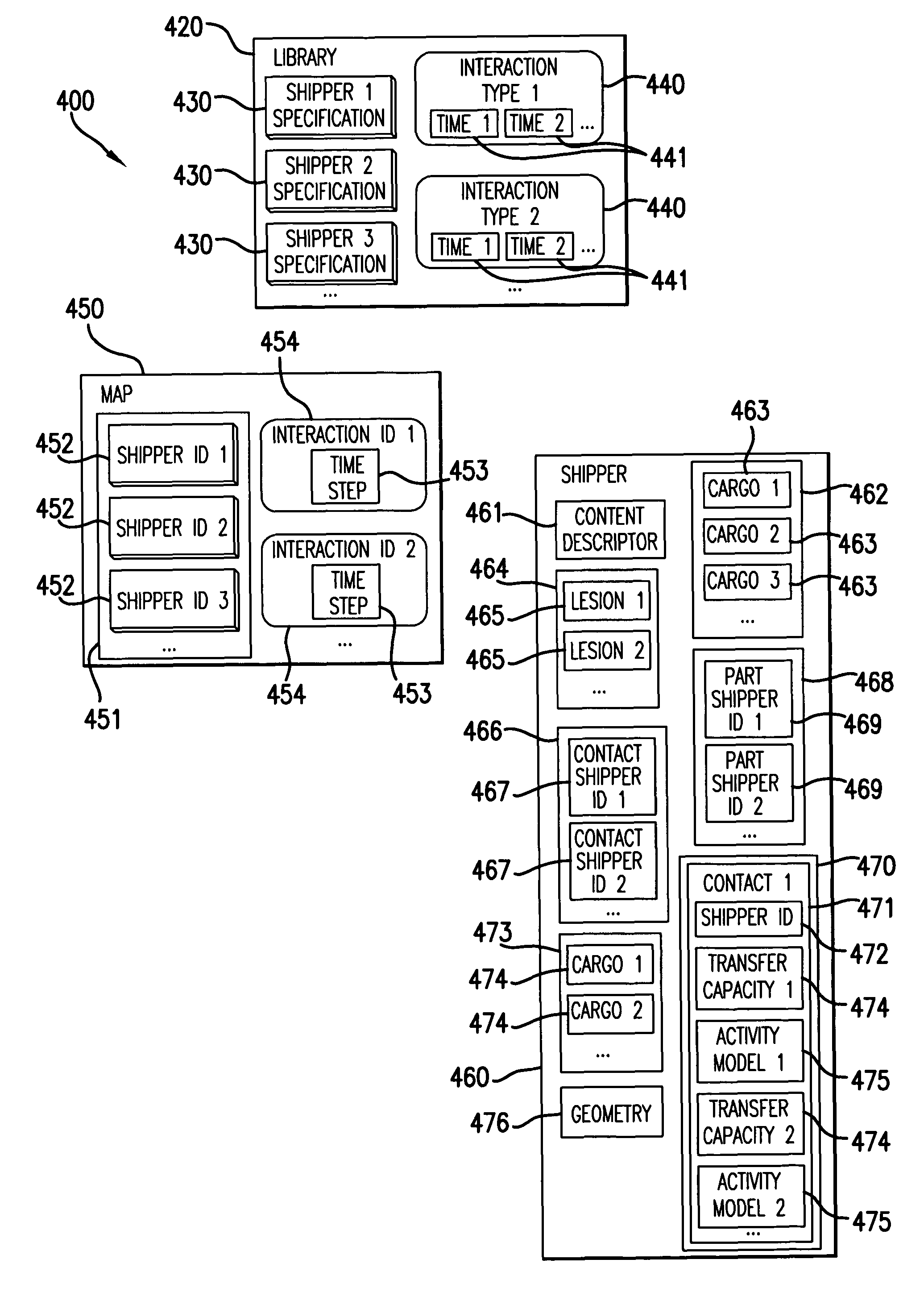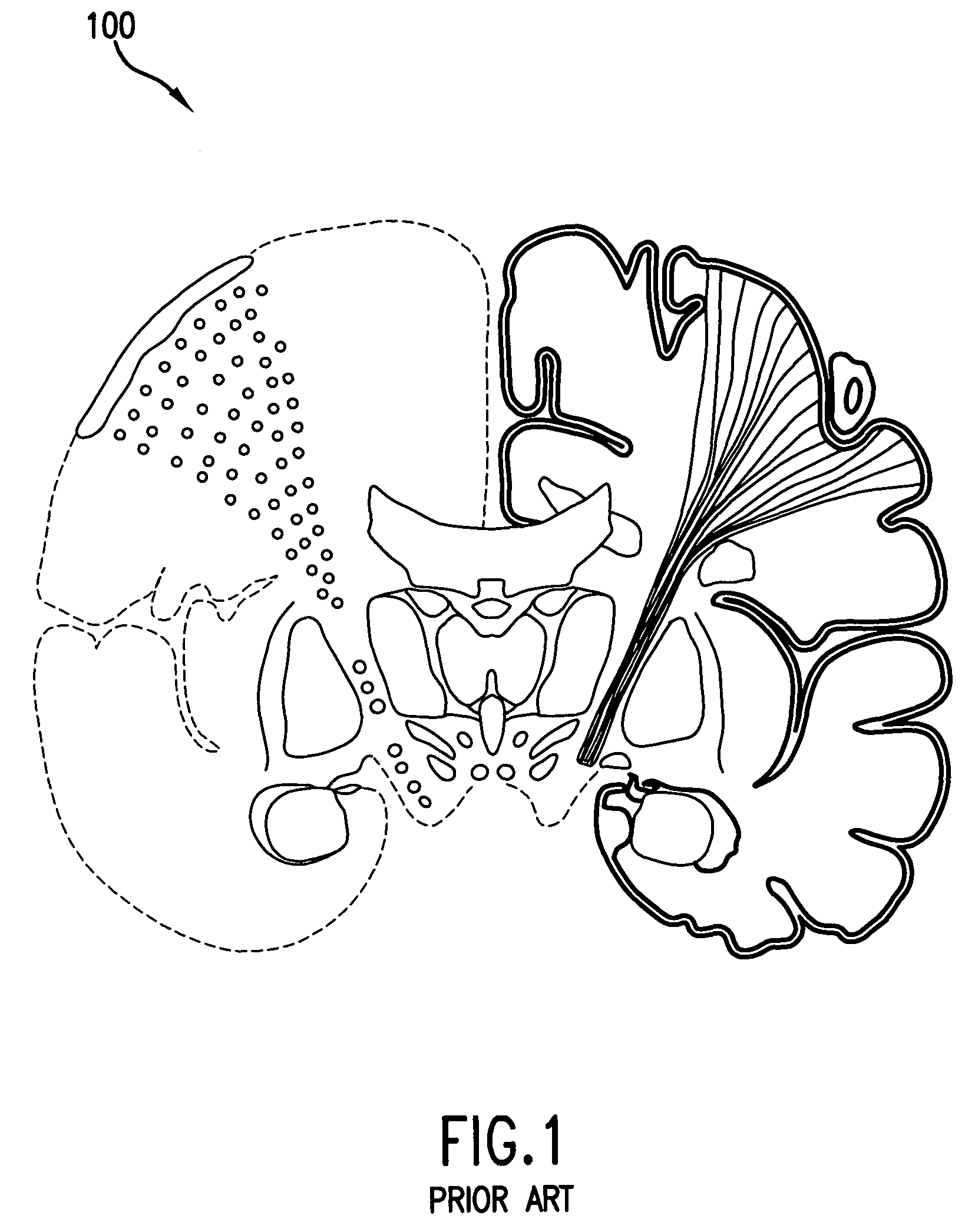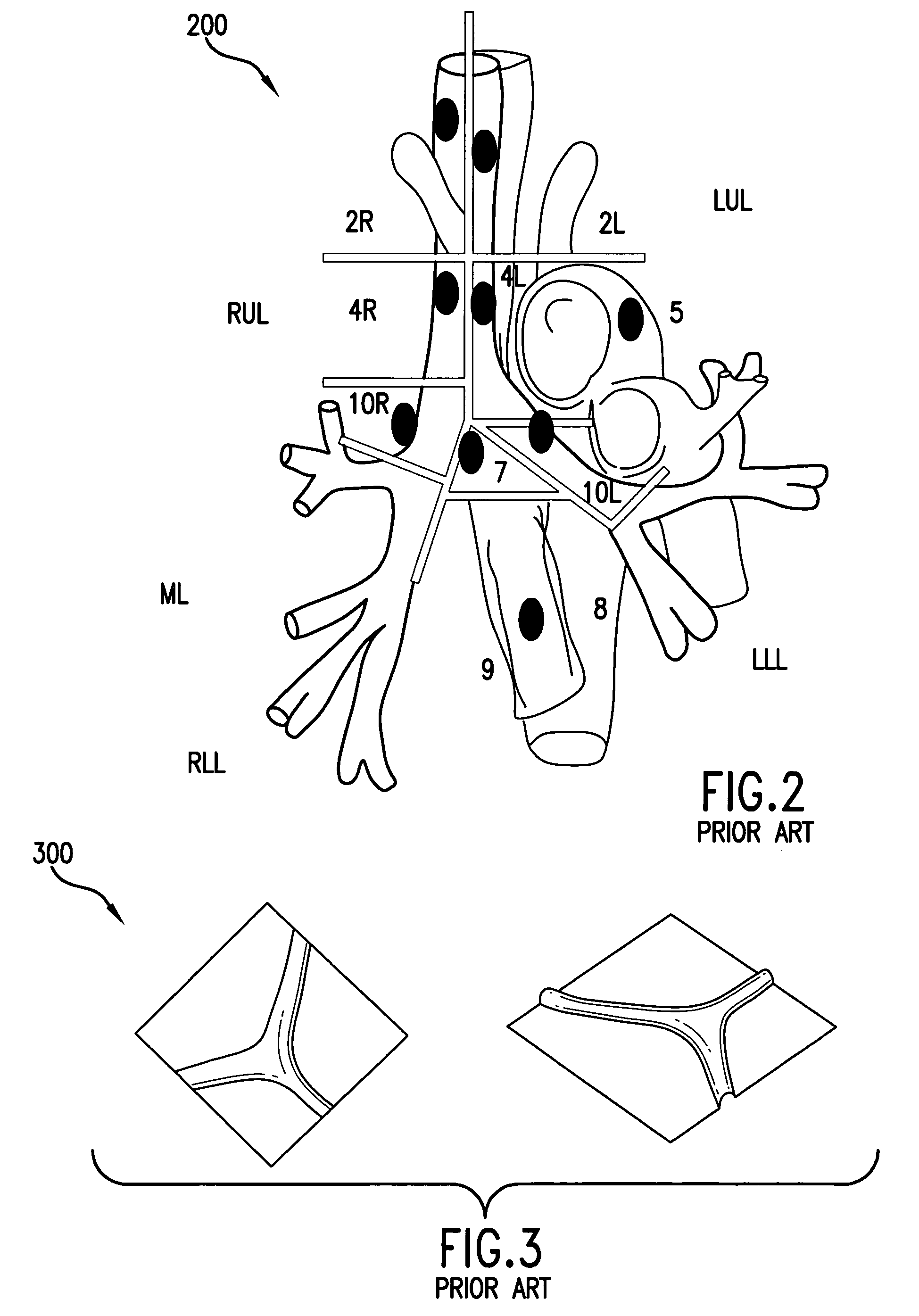Method and system for prediction and management of material and information transport in an organism
a technology of information transport and method, applied in the field of characterizing and modeling, can solve the problems of the inability to accurately represent the communication pathway in flat planes or 2d imaging, and the inability to fully specify the shape of the nerve connection
- Summary
- Abstract
- Description
- Claims
- Application Information
AI Technical Summary
Benefits of technology
Problems solved by technology
Method used
Image
Examples
Embodiment Construction
[0024]The present invention is a systematic digital approach to mapping anatomical connection and signaling across a multiplicity of channels, channel contents, and channel speeds. The present invention constructs, on the basis of measured properties, a 3D, dynamic, active model. Using this 3D, dynamic, active model, which can be patterned generally or individually, transport can be simulated. The model can be either a generic model or an individual model, such as a patient. The biological structure may be both a communication channel and an entity with 3D extent and internal function.
[0025]The present invention comprises executable computer code, data, and means by which the system may be brought to represent the spatial interactions of an organism. A preferred embodiment of the present invention is as code in an object-oriented programming language such as C++ or Java. The fundamental entity in such code is the class and its member objects and member functions.
Software Objects
[002...
PUM
 Login to View More
Login to View More Abstract
Description
Claims
Application Information
 Login to View More
Login to View More - R&D
- Intellectual Property
- Life Sciences
- Materials
- Tech Scout
- Unparalleled Data Quality
- Higher Quality Content
- 60% Fewer Hallucinations
Browse by: Latest US Patents, China's latest patents, Technical Efficacy Thesaurus, Application Domain, Technology Topic, Popular Technical Reports.
© 2025 PatSnap. All rights reserved.Legal|Privacy policy|Modern Slavery Act Transparency Statement|Sitemap|About US| Contact US: help@patsnap.com



